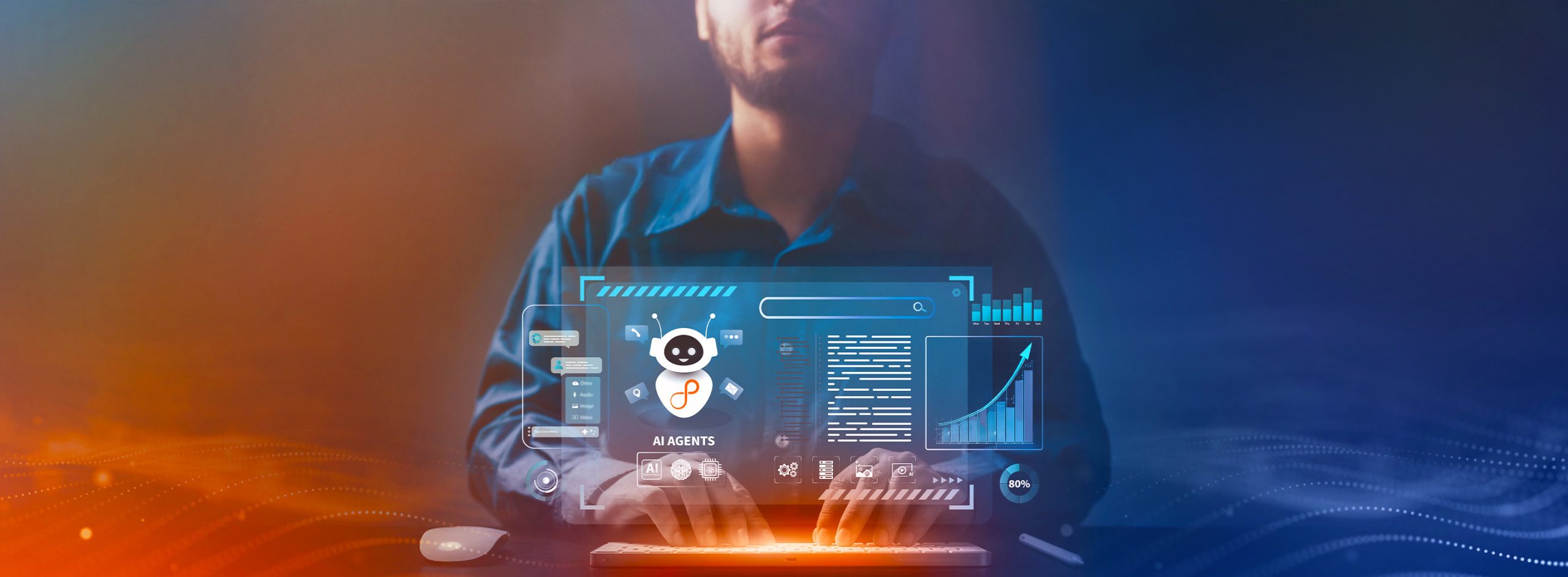The pace is picking up around Hyperautomation. Combining the best of Low-Code, RPA, AI, big data, and cloud capabilities, it’s a valuable combination of tools that can integrate and automate business processes beyond RPA and BPM, finally paving the way for the radical reinvention of formerly siloed processes across the enterprise. We also call it Intelligent Automation.
A core tenet of successful digital transformation is gathering disconnected data sources into one place to be fully leveraged across the organization and connected to provide a complete picture of the business processes.
Once that is achieved, the next step is to re-invent processes and workflows to utilize that data fully. But these too are often manual, siloed workflows tied to a department or function manual, prone to error and delays. This is where hyper-automation shines.
Enterprises derive maximum business benefits by integrating digital technologies such as Low-Code/BPM and RPA with multiple advanced AI/ML-based technologies such as NLP, OCR, and conversational BOTs. Together they can jumpstart your automation strategies:
- Help rapidly identify and automate business processes with an evolving set of Al tools. Examples include,
- Intelligent Document Processing (IDP) to automate data extraction from unstructured and semi-structured documents to remove manual data processing lags within a business process.
- Conversational bots introduce seamless human-machine conversations and help improve customer engagement and satisfaction.
- Natural Language Processing (NLP) also promoted human-machine interaction by giving machines the ability to read, understand and derive meaningful insights.
- Recognition technologies for images can simplify complex and large volume information processing to support business processes involving damage estimates in car/home insurance and help find errors on an assembly line. Speech recognition can help monitor call center interactions for intelligence Contact Center solutions.
- Enables people, robots, and AI decision algorithms to be interwoven, driving end-to-end business process automation. For example, introducing conversational bots to interact with customers and then leveraging digital bots to gather information from various legacy systems to deliver seamless customer experience for business solutions such as Digital Banking, Digital Front Door for Patience Access and Care in Healthcare, and Intelligent Claims Management in Insurance.
- Moves the enterprise from basic process automation to more complex, long-term processes at 10X speed by leveraging Low-code technologies which allow building applications and automating workflows rapidly. Most Low-Code technology vendors/System Integrators also offer pre-built solution accelerators which further helps in reducing the development time and promotes time to market.
- Manages the full cycle of enterprise automation at scale, from discovering automation opportunities to measuring the ROI based on business priorities by leveraging Business Value Analysis models. The models can identify the complexity of business processes and the business outcomes if automated through process discovery and process mining techniques. These models can also help prioritize the automation use cases within an enterprise and select the right digital technologies to deliver the end-to-end automation.
Let’s look at the key components:
LCAP/BPM – Low-Code Application Development and BPM
It offers agility and the capability to deliver enterprise-ready apps accelerating business outcomes. These platforms use visual interfaces with simple logic and drag-and-drop features instead of extensive coding language. Some of the business examples include: Know Your Customer, Policy Administration, Revenue Cycle Optimization, Customer Onboarding, Fund Accounting Optimization, HR Onboarding, Capital Calls, Franchise Management, etc.
RPA – Robotic Process automation
RPA is one of the most powerful and highly used automation technologies that play a vital role in the end-to-end business automation solution. RPA has delivered notable results by enhancing the productivity and efficiency of the business. It uses computer software ‘robots’ to handle repetitive, rule-based digital tasks such as filling in the same information in multiple places, reentering data, or copying and pasting. The key characteristic of RPA is user-Interface interaction, Process/Task Execution, High Volume Data Handling, Systems Integration and Learning Capabilities (AI-Assisted Bots). Some of the business process examples include Data migration between applications, Automated data processing, and validations, Report creation, Loans, claims processing, Account Closure, and reconciliation, and seamless data flow between Modern and legacy systems.
AI – Artificial Intelligence
It is a simulation of human intelligence in machines programmed to think like humans and mimic their actions. The AI/ML algorithms deliver various business benefits. These include simplifying time-intensive data entry activities, driving precision of business rules and models, enabling intelligent decision making, automating and optimizing routine processes and tasks, and leveraging cognitive technologies to deliver faster business decisions.
These different technologies have each reached a level of maturity that now makes them available to the enterprise. When combined into a unified Automation, CoE provides a solution that delivers this Hyperautomation ability to an enterprise. Persistent has already created Centers of Excellence and digital factories around these technologies to demonstrate best practices and use cases around these areas.
This allows customers to take an adaptive, long-term approach, experimenting and innovating with technology and new business ideas with minimal risk. Through real-time business insights, defined KPI for each function, and solution accelerators, we help enterprises to embrace and explore uncertainty safely.
In turn, they can better integrate business systems, eliminating siloed functions. And with this new 360-degree view, they can take a more holistic approach to business problems – and above all, to customer needs. Business processes can now be oriented towards the best possible customer experience instead of the customer experience being dictated by the operational constructs of the business.
That’s (intelligent Automation) Hyperautomation.






